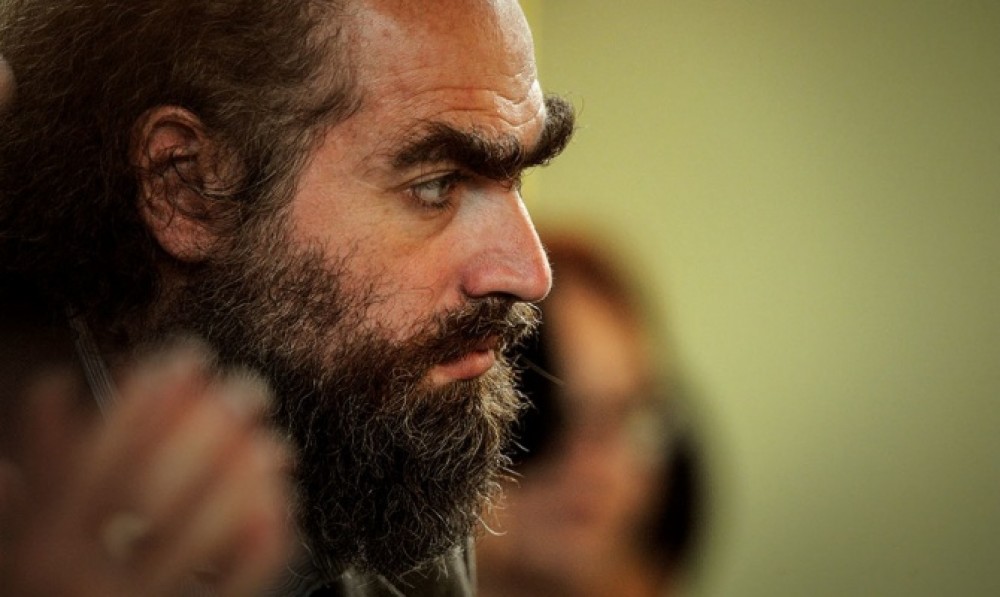Grigory Perelman turns 50 years old

Photo source .
Today, June 13, one of the greatest mathematicians of our time, Grigory Perelman, is 50 years old. He was best known for solving one of the seven “Millennium Problems” - proof of the Poincare conjecture. Interestingly, this little pretentious expression - “the millennium problem” - was invented not by journalists in order to capture the imagination of the general public, but by professionals from science. On the website of the Clay Mathematical Institute, you can easily find a section with the appropriate name " Millenium problems ", where Poincare’s hypothesis is exactly the sixth position, and the extreme difficulty of its solution is also emphasized there.
It so happened that for the non-professional public Grigori Perelman became quite widely known due to his non-standard image, far from the usual idea of respectable scientists. The above-mentioned Clay Institute (a private organization) has significant financial resources and allocated $ 1 million to solve any of the Millennium Problems, but Perelman refused the prize . A little later, the International Mathematical Union awarded the scientist Fields Medal (many call this award an analogue of the Nobel Prize in mathematics) and a prize of 15,000 Canadian dollars, but Perelman also ignored it. It looked like this (then, in 2006, the medal was awarded to another Russian citizen, Andrey Okunkov, who works at Princeton):
Indeed, it is about as difficult to talk about Perelman as about the hypothesis he proved (her popular exposition can be found on Habré ). The scientist leads a secluded life and does not give interviews, and the media, which can be easily attributed to the boulevard, reported that he lives with his elderly mother in the Khrushchev in rather shy conditions for a world-class scientist. Therefore, interviews of people from a professional environment who are personally known to Grigory Perelman are much more interesting. For example, attention deserves a lengthy conversation with his teacher Sergey Rukshin, the founder and director of the St. Petersburg City Mathematical Center for gifted schoolchildren.
The text reveals a truly amazing feature of Grigori Perelman, which for modern “clip” thinking looks extremely unusual: it turns out that the scientist worked on proof of the hypothesis for almost nine years, not knowing how it would end, and at the same time showed the highest concentration of attention.
So Grisha began to work a lot in the ninth grade, and he had a very valuable quality for mathematics: the ability for very long concentration without much success within the task. Still, a person needs psychological support; psychological success is needed to do something further. In fact, the Poincaré hypothesis is almost nine years without knowing whether the problem will be solved or not. You see, even partial results were impossible there. The theorem was not proved in full - sometimes it is possible to publish even a twenty-page article, by what it did happen. And there - or pan, or disappeared. Either Poincare’s hypothesis was proved, or not ... There were a lot of partial results before it. This is such a long attention span without hope of success - this is Perelman’s remarkable quality!
From the very same interview of Rukshin about Perelman a rather specific image of the scientist emerges: “Grisha is very rigorous. He is rigorist, his moral demands are too high. ” However, other sources help to imagine Perelman done differently.
November 11, 2002 on arXiv.org appeared the very articletitled “Entropy Formula for Ricci Flows and Its Geometric Applications”, which led to the worldwide recognition of the scientist. One of the few acquaintances of Perelman at work at New York University, a young Chinese mathematician Gang Tian, received an email from him about the article and, immediately realizing how great the result is, he began her discussion with his colleagues.
After the publication of the article, Perelman was invited to read a monthly course of lectures by several universities at once, including MIT and Princeton. Perelman agreed, and in one of the lectures attended by John Ball (President of the World Union of Mathematicians), Andrew Wiles (author of the proof of Fermat's theorem), John Nash Jr. (son of mathematician John Nash, the prototype hero of the film “Mind Games”, and author proofs of Riemann's embedding theorem), John Conway (author of the game "Life"), he did not mention at all about the reason for which he was invited - the Poincare hypothesis. The mathematician Frank Quinn of the University of Virginia described his feelings as follows: “Man proved one of the greatest theorems of mathematics — and never once remembered about it ... He strengthened his reputation. If he had started beating his chest and shouting "I solved it!",
Since Perelman himself didn’t discuss his results with anyone before arXiv.org, his action looked quite unusual for the scientific community: it’s customary to discuss such things with professionals so that if an error is found it’s not a passing profane. When Tyan drew the attention of his Russian colleague to this circumstance, Perelman was indifferent to the warnings: “I thought this way: if I had made a mistake somewhere and someone else could offer correct evidence, relying on my results, I would only pleased. I have never set my goal alone to solve the Poincaré problem. ”
